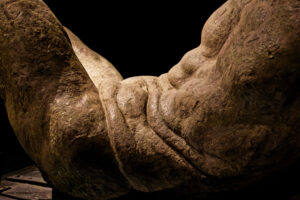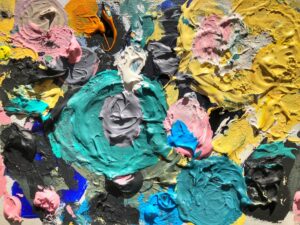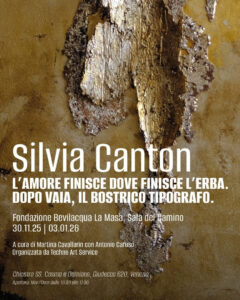Introduction
Artistic Paths through the Centuries
Exploring artistic transformations from the late Middle Ages to the 20th century, discover how the Renaissance marked a turning point, with artists such as Leonardo da Vinci and Michelangelo rediscovering the beauty of antiquity. Their innovative approaches to anatomy and perspective laid the foundations for later movements. With the arrival of the Baroque, drama and emotion took hold, followed by the simplicity and rationality of the Enlightenment. Each period is a reflection of society and cultural changes, giving you a deep understanding of the interactions between art and everyday life.
The Renaissance
The Renaissance represents a period of extraordinary cultural flowering from the 14th to the 16th century, characterised by a renewed interest in art, science and philosophy, inspired by classical antiquity. In this context, artists and thinkers revolutionised the way the world was seen, embracing perspective, proportion and humanism. The works created during this period reflect a profound understanding of human nature and beauty, contributing to a lasting transformation of the visual arts in Europe.
Highlights
During the Renaissance, art took an innovative turn with an emphasis on linear perspective and realism. The use of light and shading added depth to compositions. The human figure was depicted in a more natural way, with an in-depth study of anatomy. Religious and mythological themes were mixed, reflecting the growing interest in the individual and his experience.
Significant Artists
Among the most influential artists of the Renaissance are Leonardo da Vinci, Michelangelo and Raphael, each leaving an indelible mark on the artistic landscape. Leonardo, with his innovative techniques and scientific research, created masterpieces such as the “Mona Lisa.” Michelangelo, a master of sculpture and painting, created monumental works such as the ceiling of the Sistine Chapel. Raphael, known for his grace and harmony, was able to synthesise the innovations of his predecessors into iconic works.
Michelangelo Buonarroti, active in the heart of the Renaissance, is considered one of the giants of art. His sculptures, such as the ‘David’ and the ‘Pieta,’ display extraordinary technical mastery and a deep emotional sense. The ceiling of the Sistine Chapel, created between 1508 and 1512, is a masterpiece of Western painting, with vibrant biblical scenes and monumental figures. The competition between these artists fuelled an era of extraordinary creativity, each work reflecting not only their individual genius, but also the cultural fervour of an entire era.
Baroque and Rococo
The Baroque, which flourished between the 17th and 18th centuries, is characterised by exuberant art, dramatic spirit and a strong sense of movement. Baroque works are distinguished by their bold use of light and shadow, creating exciting effects. Rococo, which emerged later, abandoned the rigid geometries of the Baroque to embrace more delicate decorations with playful themes and pastel colours, emphasising joy and intimacy.
Themes and Style
In the Baroque, themes revolve around intense emotions and biblical narratives. The contrast between light and shadow, known as chiaroscuro, emphasises the drama of the scenes depicted. In contrast, the Rococo embellishes subjects with a lighter aesthetic, focusing on mythological scenes and festivities, emphasising elegance and grace.
Influences on Modern Art
The Baroque and Rococo left a significant imprint on modern art, especially in the way it dealt with emotional expression and ornamentation. 20th century artists, such as Gustav Klimt, reinterpreted decorative and dramatic elements, integrating symbolism and visual complexity, challenging traditional artistic conventions and influencing modernism.
Baroque influences are manifested in the way modern artists explore visual and emotional tension, using dynamic compositions and layered colours. The search for depth and complexity in modern art, visible in the works of the Surrealists and Expressionists, reflects the Baroque legacy. Furthermore, Rococo inspired a new generation of artists to break with minimalism, embracing ornamentation and sinuous details, creating a direct link with the beauty and charm of decoration, which continues to influence contemporary artistic currents. The dialogue between these historical epochs offers insights into the transformations and continuities in art throughout the centuries.
Neoclassicism
Neoclassicism, which emerged at the end of the 18th century, is an artistic movement reflecting a renewed interest in classical antiquity. In contrast to the earlier Baroque and Rococo styles, the Neoclassicists were inspired by the forms and themes of Greek and Roman art, focusing on harmony, symmetry and idealism. This current manifested itself not only in visual art, but also in architecture and literature, establishing itself as a reaction to the tumultuous changes of the time and promoting values of order and rationality.
Return to the classics
The return to the classics during Neoclassicism is marked by the search for ideal proportions and symmetrical beauty, often inspired by archaeological discoveries. Artists such as Jacques-Louis David reworked mythological stories, emphasising civic and moral virtues. Aesthetic values were combined with a socio-political message, directing art towards an ideal of nobility and justice to aspire to, reflecting the tumultuous changes in society.
Main exponents
The main exponents of Neoclassicism include Jacques-Louis David, Antonio Canova and Jean-Auguste-Dominique Ingres. David, perhaps the most influential, expressed ideals of sacrifice and civic duty in his masterpieces, while Canova took sculpture to new heights of emotional expressiveness. Ingres, with his works, combined formal perfection and sensuality, reflecting the tension between the classical and the romantic.
Jacques-Louis David is known for emblematic works such as ‘The Oath of Horatii’, which embodies the union of aesthetic beauty and a strong moral message. Antonio Canova, with sculptures such as ‘La Venera di Canova’, captured grace and delicacy, making the feminine ideal a point of reference. Jean-Auguste-Dominique Ingres, on the other hand, embraced a more personal vision of art, with paintings such as ‘The Great Odalisque’, combining the rigour of the classical tradition with elements of sensuality, effectively characterising a bridge between Neoclassicism and Romanticism. These artists not only defined the era, but also influenced future generations, leaving an immeasurable artistic legacy.
Romanticism
Romanticism, which developed at the end of the 18th century and in the 19th century, emphasised subjectivity and emotion, opposing the rationality of the Enlightenment. Romantic artists sought to express the intensity of human feelings, drawing inspiration from nature, history and imagination. The artworks of this period reflect a deep connection with individual freedom and personal experiences, as well as a reverence for the sublime.
Emotion and individuality
In Romanticism, emotion becomes central. Artists, such as Eugène Delacroix and Caspar David Friedrich, used colours and shapes to express intense feelings, celebrating individuality. This movement encouraged introspection and the value of subjectivity, making the artist a spokesman for one’s inner moods and desires.
Art and Society
Romanticism also reflected a time of great social change. The French Revolution and wars of independence influenced artists to express ideals of freedom and justice. Art became a tool to comment on social injustice and to inspire change, highlighting tensions between the individual and the collective.
Artists such as Francisco Goya drew from historical events in his engravings to highlight human suffering, while works by Delacroix celebrated heroism and the struggle for freedom. Romantic art was not just a reflection of individual emotions, but a powerful tool for social criticism, used to bring out the voices of the oppositional and marginalised, turning art into a medium for collective awareness.
Impressionism
The Impressionist movement, born in France in the second half of the 19th century, revolutionised the way light and colour were perceived and represented. Impressionist artists, such as Claude Monet and Pierre-Auguste Renoir, moved away from academic conventions, prioritising momentary impression over formal precision. This new vision of art coincided with important social and technological changes, which profoundly influenced creativity and artistic expression.
The Rejection of Tradition
The Impressionists had a radical approach, rejecting the traditional rules of academic painting. They believed in freedom of expression and the ability to capture the moment, rather than following rigid compositional standards. Their decision to exhibit work outside the official galleries symbolised a true act of rebellion against the established artistic system.
Technical Innovations
The Impressionists’ technical innovations were fundamental in defining their unique style. Using rapid brushstrokes and pure colours, they created works that appeared vibrant and dynamic. The use of unmixed colours and the ‘plein air’ technique allowed them to capture natural light, offering a new way of seeing the world.
The ‘alla prima’ technique, or direct painting, in which artists applied colour directly onto the canvas without preliminary preparation, favoured the freshness of their works. Tools such as tubes of colour and brushes of different shapes contributed to this experimentation. For example, Monet, with his famous painting ‘Impression, soleil levant’, demonstrated the effectiveness of using quick touches of colour to convey the atmosphere of a landscape at a specific time of day, thus becoming a symbol of Impressionism itself.
Modernism
Modernism developed between the end of the 19th century and the middle of the 20th century, marking a break with previous artistic traditions. During this period, art embraced innovation and personal interpretation, giving rise to new forms of expression. Movements such as Cubism, Expressionism and Futurism challenged conventions, exploring new techniques and subjects, from the everyday to the visionary. Art thus became a reflection of the social and technological changes of the modern era.
Experimentation and movements
Experimentation and movements characterised Modernism, with artists exploring innovative materials and techniques. Cubism, for example, broke with traditional form, presenting objects from multiple angles simultaneously, while Futurism celebrated the speed and dynamism of modern life. These currents influenced not only painting, but also sculpture and architecture, promoting an ever-evolving art form.
Iconic artists
Iconic Modernist artists include Pablo Picasso, Wassily Kandinsky and Marcel Duchamp. Each of them reinterpreted reality through art, breaking conventional structures and venturing into new expressive territories. Picasso, through Cubism, disrupted traditional perspective, while Duchamp revolutionised the concept of art with his ‘ready-mades’. These figures not only changed their era, but left an indelible mark on the course of art history.
Conclusions
Through the journey from Renaissance art to Modernism, you have explored how artistic currents evolved in response to cultural and social change. Each period brought significant innovations and profound reflections on the human condition. Understanding these developments enables you to better appreciate works of art and their significance in historical context. We invite you to continue exploring and connecting with the different artistic expressions that have shaped the contemporary world.



